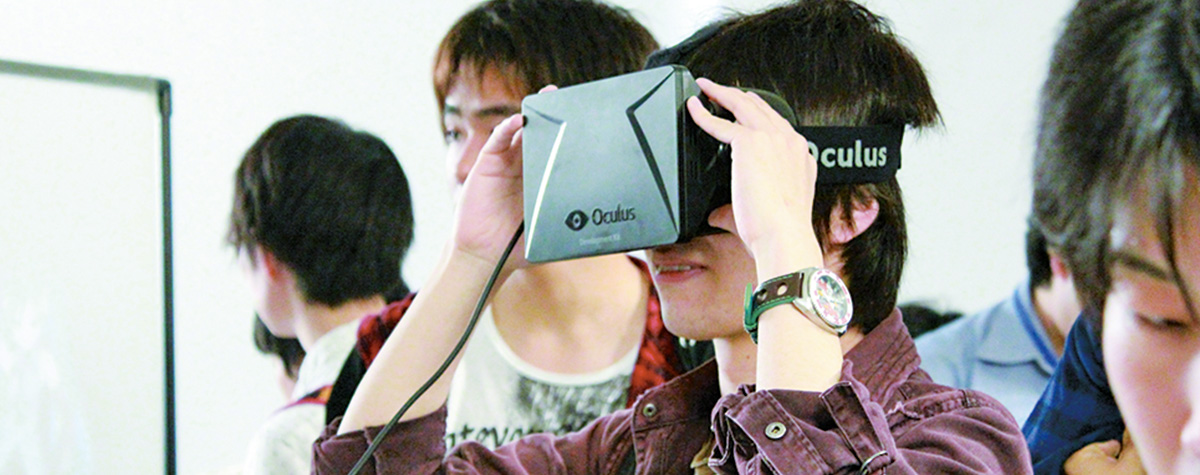Program Features
The Department of Digital Media conducts education and research on information and applied systems that rely on computer and network infrastructure.
Elementary courses provide instruction in computer fundamentals as well as the basics of computer programming required for the advanced study of Information Science and Digital Media. In addition, students receive a solid grounding in the core disciplines of Mathematics and Physics, and acquire the skills needed to write research papers and deliver presentations on their research projects and accomplishments.
The department’s mission is to cultivate human resources for service in the digital media field who will be skilled in the use of various computer systems. The digital media field itself comprises an array of disciplines, including the recognition of computer-input images and patterns, computer graphics (CG), which blends imagery from the real world with images created using computers, and visualization technologies which are used to express computer-generated images in forms that humans can understand.

Among the advanced courses, the Computer Graphics and Visualization course allows students to intensify their focus on areas where computer graphics technology has come into wide use. For example, this course provides opportunities to study ways of adapting computer graphics to art, visualizing blends of imagery from the real and virtual worlds, and finding graphical expressions for mathematical equations. In the Multimedia Recognition course, students study topics ranging from the recognition of images and audio to communications technologies for the transfer of multimedia data.
The curriculum also includes an information science project that students start in their first year as a means of honing their skills in conceptualization and the recognition and solution of problems, an Education Assistance course that allows students to serve as assistants in high-school computer education programs, a Special Digital Media Seminar that exposes students to the latest papers of relevance to their graduate thesis, and a Digital Media Graduate Thesis course.
Message from the Department Chair of Digital Media
Welcome to the Department of Digital Media.
There are a lot of computers around us such as smart phones and car navigation systems. Thanks to advances in visualization techniques, we can enjoy 3D movies almost everywhere. The popularity of GPS allows us to get lost less often when we are out driving in new places. These advances largely depend on the progress of computer utilization technologies. We are quite familiar with using computer processing to retouch deformed photographs and images, and to read and recognize blurred letters. Voice recognition technology also has greatly improved our ability to eliminate noise, and recognize important words as well. In other words, computer and its utilization technologies seem to be a part of our lives.
In the achievement of this success, highly developed IT technologies such as programing languages, physics-based calculations, rendering techniques, image processing, speech information processing have contributed. Microscopically, each one is an accumulation of element technologies. However, each of them is not used independently in a computer today, but we are moving toward a new age of systematic use of various kinds of technologies.
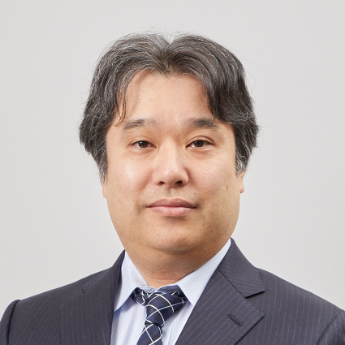
Takafumi KOIKE, Professor, Dr.
Department Chair of Digital Media

As the development of computers and their applications is quite fast, new ideas including mathematical processing and physics-based calculations are also required for it. As you know, our multimedia society is flooded with information. To make the most of it, you need to learn the most promising basic techniques and acquire the ability to think in a logical way.
Students of Department of Digital Media start with programming languages, which are the basis for various applications in the fields, and learn mathematics and physics, which are important to strengthen your logical thinking. In addition, the department provides various kinds of curricula, which allow you to choose the course you want according to your developing expertise. We believe that you will gain access to advanced technologies when you make use of the knowledge and technology that you acquired through your research in this department. Let’s aim to advance science through your logical perception and new ideas.
Professors of Digital Media
Prof. Katunobu ITOU

Speech, Audio and Language Processing Lab
Katunobu ITOU
Professor (Digital Media, Graduate School)
Ph.D. (Engineering)
Research area:
- Speech Processing
- Natural Language Processing
- Music Computing
Katunobu ITOU received the B.E., M.E. and Ph.D degress in computer science from Tokyo Institute of Technology in 1988, 1990 and 1993 respectively. From 2003 to 2006, he was an associate professor at Graduate School of Information Science of the Nagoya University. In 2006, he joined the Faculty of Computer and Information Sciences at Hosei University, Japan, as a Professor.
His current research interest is spoken language processing.
He is a member of the Information
Processing Society of Japan and the Acoustical Society of Japan.
Prof. Shiro KAWABATA

Quantum Computer Lab
Shiro KAWABATA
Professor (Digital Media, Graduate School)
Ph.D. (Applied Physics)
Research area:
- Quantum computer
- Quantum information theory
- Superconducting quantum circuit
- Quantum annealing
Shiro KAWABATA was born in Kagoshima, Japan in 1970. He received Ph.D. in applied physics from Osaka City University, Japan in 1998. From 1998 to 2024, he worked in National Institute of Advanced Industrial Science and Technology (AIST), Tsukuba, Japan and was deputy director of Global Research and Development Center for Business by Quantum-AI Technology (G-QuAT), AIST. He joined the faculty of the Computer and Information Sciences in Hosei University in 2024.
His current research interests include quantum computing, quantum information theory, quantum device/circuit, and quantum annealing. He is a member of the JSPS and JSAP. He is also sub-program director of MEXT Q-LEAP program, advisor of CAO Moonshot Goal 6 “Realization of a fault-tolerant universal quantum computer that will revolutionize economy, industry, and security by 2050”, and cross-appointment fellow of G-QuAT, AIST.
Message
In our lab, students can learn physics (quantum mechanics, statistical physics, solid state physics, …) and computer science (algorithm, programing, information theory, …). By combining these two fields, we will study future cutting-edge computation technology such as quantum computer (noisy intermediate quantum devices and fault tolerant quantum computers ) and quantum annealing.
Prof. Takafumi KOIKE

Computational Reality Lab
Takafumi KOIKE
Professor (Digital Media, Graduate School)
Ph.D. (Information and Communication Engineering)
Research area:
- Media technologies connected between real world and cyber world
- Real-time computer graphics
- Augmented reality
- Computational photography
- 3D imaging
Takafumi Koike received the B.S. in physics from Tokyo Institute of Technology, the M.E. in
mathematical engineering and information physics from The University of Tokyo, and Ph.D. in
information and communication engineering from The University of Tokyo, in 1995, 1997, and 2009,
respectively. He was formerly a senior researcher at Yokohama Research Laboratory, Hitachi, Ltd.
Since 2013, he has been a professor at the Faculty of Computer and Information Sciences, Hosei
University.
His research interests include media technologies connected between real world and
cyber world, light field displays, computational photography, and virtual/augmented/mixed
reality.
He is a member of the ACM, the
IEEE, and the OSA.
Message
I want to create a richer society by media technologies. One of my favorite texts is “Think like an amateur and execute like an expert (by Prof. Kanade, CMU)”. If you feel empathy for this text, please contact me!
Prof. Syuhei SATO
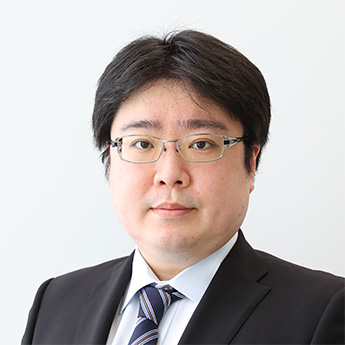
Computer Graphics Lab
Syuhei SATO
Associate Professor (Digital Media, Graduate School)
Ph.D. (Information Science)
Research area:
- Computer graphics
- Image processing
- Virtual/Augmented reality
- User interface
Syuhei Sato received the B.E., M.E. and Ph.D in Information Science in 2009, 2011, and 2014, respectively, from Hokkaido University. He worked at Ubiquitous Entertainment Inc. (2014-2015), DWANGO Co., Ltd. (2015-2019), and Prometech Software, Inc. (2019) as a researcher on Computer Graphics. He was an assistant professor with the Faculty of Engineering, University of Toyama, Japan from 2019 to 2022. He has been an associate professor at the Faculty of Computer and Information Sciences, Hosei University since 2022. His research interests center in Computer Graphics including fluid simulation, editing and modeling.
Prof. Yasunari ZEMPO
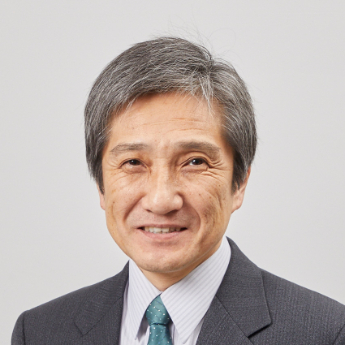
Computational Physics Lab
Yasunari ZEMPO
Professor (Digital Media, Graduate School)
Ph.D. (Physics)
Research area:
- Computational materials science
- Development of computational techniques for material design and property prediction
- Large-scale parallel computing
Yasunari ZEMPO was born in Kure, Japan on May 18, 1956. He received the B.S. and M.S. degree from Hiroshima University in 1980, and 1982, respectively. In the field of theoretical materials science, he received Ph.D. in physics from Hiroshima University, Japan in 1985. He was formerly with Tsukuba Research Laboratory, Sumitomo Chemical, where he was engaged in the computational materials science, and its practical applications using very large scale computers. He was an experienced researcher in the industry, until he joined the faculty of Computer and Information Sciences at Hosei University, in 2009.
His current research areas include computational materials science, and computational physics as well as high performance computing.
He is a member of the physical society of Japan, American physical society, and the Japan society for industrial and applied mathematics.
Message
Our society owes its present prosperity to its industrial growth, which is right now realized by computer-simulation based researches. This new type of research is now extensively being applied to all fields of science and engineering. We hope to contribute to the society through our simulation techniques. If you would like to learn the necessary basic skills and techniques, just visit us. Recent computational techniques can be experienced through solving various practical-level exercises and programming.
Prof. Seishi TAKAMURA

Media Information Processing Lab
Seishi TAKAMURA
Professor (Digital Media, Graduate School)
Doctor (Engineering)
Research area:
- Image processing, Image compression
- Multi-modal information processing
- Point cloud data processing
- Encoding optimization of International video coding standards
Seishi TAKAMURA received the B.E., M.E. and Ph.D. degrees from the University of Tokyo in 1991, 1993 and 1996, respectively. In 1996 he joined Nippon Telegraph and Telephone (NTT) Corporation, where he has been engaged in research on efficient video coding and ultra-high quality video coding. He has fulfilled various duties in the research and academic community in current and prior roles including Associate Editor of IEEE Transactions on Circuits and Systems for Video Technology, Executive Committee Member of IEEE Tokyo Section, Japan Council and Region 10 (Asia-Pacific). He has also served as Chair of ISO/IEC JTC 1/SC 29 Japan National Body, Japan Head of Delegation of ISO/IEC JTC 1/SC 29, and as an International Steering Committee Member of the Picture Coding Symposium. From 2005 to 2006, he was a Visiting Scientist at Stanford University, California, USA. Since 2016 he has been a Senior Distinguished Engineer at NTT Media Intelligence Laboratories. Since 2022, he is a Professor of Hosei University, Japan and a Visiting Senior Distinguished Engineer of NTT Computer and Data Science Labs. Dr. Takamura is a Fellow of IEEE, IEICE, ITE and IPSJ, and a member of MENSA, APSIPA, SID and IIEEJ.
Message
I would like to emphasize that it is only through the accumulation of basic knowledge and the necessary detours that we can do fundamental and creative work that does not become obsolete. I believe that this should be acquired through one’s own experience and appropriate guidance from the time when one is a student with relatively ample time.
Prof. Hiroshi HANAIZUMI
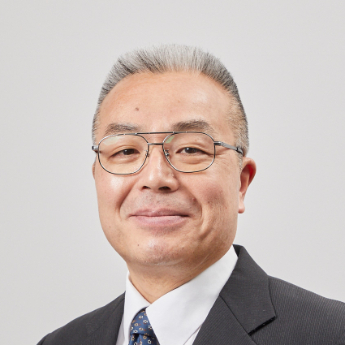
Multi-dimensional Image Processing Lab
Hiroshi HANAIZUMI
Professor (Digital Media, Graduate School)
Ph.D. (Communication Engineering)
Research area:
- Image Processing
Hiroshi HANAIZUMI was born in Fukushima, Japan on February 16, 1956. He received the B.Sc. degree in communication engineering from the University of Electro-Communications, Tokyo, Japan, in 1978, and the M.Sc. and Dr. Eng. Degrees in instrumentation physics from The University of Tokyo, Japan, in 1980 and 1987, respectively. From 1981 to 1987 he was a research assistant at the Department of Mathematical Engineering and Information Physics, The University of Tokyo. He joined Hosei University in 1987 as a Lecturer in the Department of Industrial and Systems Engineering, and was an Associate Professor from 1989 to 1995, and has been a Professor since 1996. Since 2000, he has been a Professor at the Faculty of Computer and Information Sciences, Hosei University.
His current research areas include remote sensing, face recognition and 3D medical image processing.
He is a member of the IEEE Computer Society, Geoscience and Remote Sensing Society, Institute of Electronics, Information and Communication engineers, and Society of Instrument and Control Engineers.
Message
My research focuses on image processing and recognition. Images have much information on the objects, for example, remotely sensed images include spectral, spatial and temporal information about terrain objects, and face images personal information. The main purpose of the image processing is to extract the information by using various techniques. Noise reduction is one of very important processing in these techniques. The information extracted is then generalized with the physical properties (priori information) and is used for recognizing “what or how is the object”. The recognized results are used as sources of digital media. I want to realize smart recognition like human. My current research interests are image processing in remote sensing, medical image processing and person recognition from face image. My hobbies are reading and gardening.
Prof. Satoru FUJITA

Service Systems Lab
Satoru FUJITA
Professor (Digital Media, Graduate School)
Doctor (Engineering)
Research area:
- XML processing
- Web service
- SOA
- Multi-agent system
Satoru FUJITA was born in Shizuoka, Japan on Jun 25, 1961. He received the B.E. and M.E. degrees in Electronic engineering from Tokyo University, Tokyo, Japan in 1984, 1986 respectively. He received the Doctor of Engineering from Tokyo University in 1989. He was formerly with Internet Systems Research Laboratories of NEC Corporation, where he was engaged in design and development of mobile programming language and Web services. Since 2008, he has been a Professor at the Faculty of Computer and Information Sciences, Hosei University. His current research areas include human sensing, service computing, and multi-agent based simulation. He is a member of the IEICE of Japan, Information Processing Society of Japan, and the Japanese Sciety for Artificial Intelligence.
Message
I have two basic policies for managing my laboratory. One is respect for individuals and another is higher research motivation. Members are required to find their problems by themselves, and discuss solutions deeply.
Prof. Hiroshi HOSOBE

User Interface Lab
Hiroshi HOSOBE
Professor (Digital Media, Graduate School)
Ph.D. (Science)
Research area:
- User Interfaces
- Information Visualization
- Constraint Programming
Hiroshi Hosobe received his bachelor, master, and doctoral degrees from the University of Tokyo in 1993, 1995, and 1998 respectively. After serving as a JSPS Postdoctoral Research Fellow at the University of Tokyo and as a Research Associate at the National Center for Science Information Systems, he joined the National Institute of Informatics as a Research Associate in 2000, where he worked as an Associate Professor from 2004 to 2013. In 2005, he spent two months as an Invited Professor in the LINA laboratory at the University of Nantes. He joined Hosei University as a Professor in 2013. He was presented with the Takahashi Award in 2003 by the Japan Society for Software Science and Technology and with the Best Paper Award in 2003 by the 6th Pacific Rim International Workshop on Multi-Agents.
Message
Our lab is studying how to develop software systems, especially, with visual and interactive properties. Although such systems are becoming increasingly important and widespread, the method of their development has remained unchanged for over twenty years; people have been using object-oriented imperative programming languages (e.g. C++, Objective-C, and Java) for this purpose. We are tackling this situation by adopting mathematical approaches such as constraint programming. We welcome your participation in our activities.
Prof. Jianhua MA
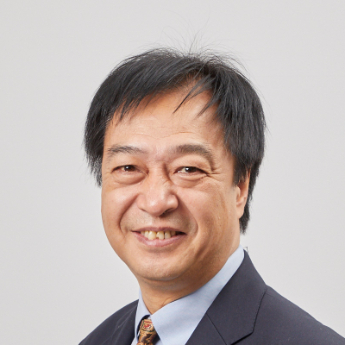
Ubiquitous Computing Lab
Jianhua MA
Professor (Digital Media, Graduate School)
Doctor of Information Engineering
Research area:
- Ubiquitous Network and Computing
- Smart Object, Space and Service
- Autonomic and Trusted System
Jianhua MA received his B.S. and M.S. degrees of Communication Systems from National University of Defense Technology (NUDT), China, in 1982 and 1985, respectively, and the PhD degree of Information Engineering from Xidian University, China, in 1990. He has joined Hosei University since 2000, and is currently a professor at Digital Media Department in the Faculty of Computer and Information Sciences. Prior to joining Hosei University, he had 15 years’ teaching and/or research experiences at NUDT, Xidian University, and The University of Aizu, Japan.
He is teaching the courses of Java Programming, Computer Networks, Multimedia Technologies and Applications, Ubiquitous Computing, Advanced Networking and Computing, CIS Project A/B, and Research Seminars on Advanced Cyber and Ubiquitous Computing.
His research from 1983 to 2002 covered wireless communications, data encryption, speech processing, multimedia QoS, 1-to-m HC hyper-interface, graphics ASIC, e-learning and virtual university, CSCW, multi-agents, Internet audio/video, mobile web service, P2P network, etc. Since 2003, he has been devoted to what he called Smart World and Hyper World pervaded with smart physical u-things, characterized with Ubiquitous Intelligence (u-Intelligence, UI) for u-Services with UbiSafe guarantee. The u-intelligence, actually the whole ubicomp/percomp, should be based on the systematic study of the u-Things and Cyber-Individuals (Cyber-I) in the integrated Cyber-Physical-Social World.
Dr. Ma has published over 200 papers in journals and proceedings, edited over 10 books, made over 15 journal special issues as a Guest Editor, and served many international journals as an Editor-in-Chief or editorial board member. He has organized a lot of conferences as one of chairs. He is a founder of Int’l Conf. on Ubiquitous Intelligence and Computing (UIC), Int’l Conf. on Autonomic and Trusted Computing (ATC), IEEE Conf. on Cyber, Physical and Social Computing (CPSCom), and IEEE Conf. on Internet of Things (iThings). He is a Chair of IEEE CIS Task Force on Autonomic and Trusted Computing, and a co-founder of IEEE Task Force on Ubiquitous Intelligence and Computing.
Access Laboratory to know more about him.
Message
Cyber world is a completely new digital space supported by Internet, Web, cloud, IoT and so on. It is very necessary to find out essential features and develop novel technologies to deal with digital explosions of information, connection, service and intelligence in this new world. The systematic study is important to cover both advanced technological aspects and human factors to realize the harmonious symbiosis of humans, computers, and things in an emerging cyber-physical hyperworld.
Prof. Shuichi YUKITA
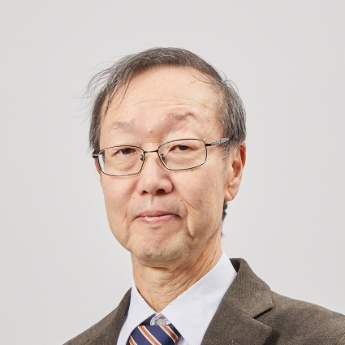
Inference Visualization Lab
Shuichi YUKITA
Professor (Computer Science, Graduate School)
Ph.D. (Computer Science)
Research area:
- Cellular Automata Theory
- Algorithmic Mathematics
- Mathematical Visualization
Shuichi YUKITA was born in Chiba, Japan on January 12, 1954. He received the B.S. degree in physics, M.S. degree in mathematics from Tokyo University, Tokyo, Japan in 1976 and 1978, respectively. He received the Ph.D. degree in information science from Tohoku University, Sendai, Japan in 2000. From 1983 to 1987, he was with Toyo University, Saitama, Japan. From 1987 to 1993, he was with Wakkanai-Hokusei junior college, Hokkaido, Japan. From 1993 to March/2000, he was with the University of Aizu, Fukushima, Japan. In April 2000, he joined the Faculty of Computer and Information Sciences at Hosei University, Japan, as an Associate Professor, and then a Professor since April 2001.
His current research areas include cellular automata theory, algorithmic mathematics, and mathematical visualization.
He is a member of the IEEE Computer Society, IEICE, IPSJ, Mathematical Society of Japan, and JSIAM.
Message
Find your own winning way in the game of theoretical thinking that involves lots of mathematics and scientific discovery. While playing this game, we apply the dialogue engineering (or dialectical) technique. Dialogue may be sometimes monologue, where dialogue occurs between one and oneself, and, of course, dialogue may be actual dialogue in seminar talks and other presentations. My main research theme can be termed as dialogue engineering.
Professor Emeritus
Prof. Vladimir SAVCHENKO
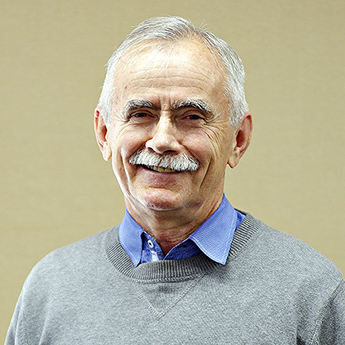
Vladimir SAVCHENKO
Professor Emeritus
Ph.D. (Theoretical Mechanics)
Research area:
- Geometric Modeling
- CG
- Animation
Prof. Toru WAKAHARA
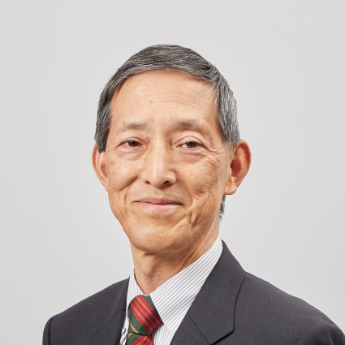
Pattern Recognition Lab
Toru WAKAHARA
Professor Emeritus
Ph.D. (Mathematical Engineering and Information Physics)
Research area:
- Intelligent Image Processing
- Pattern Recognition
